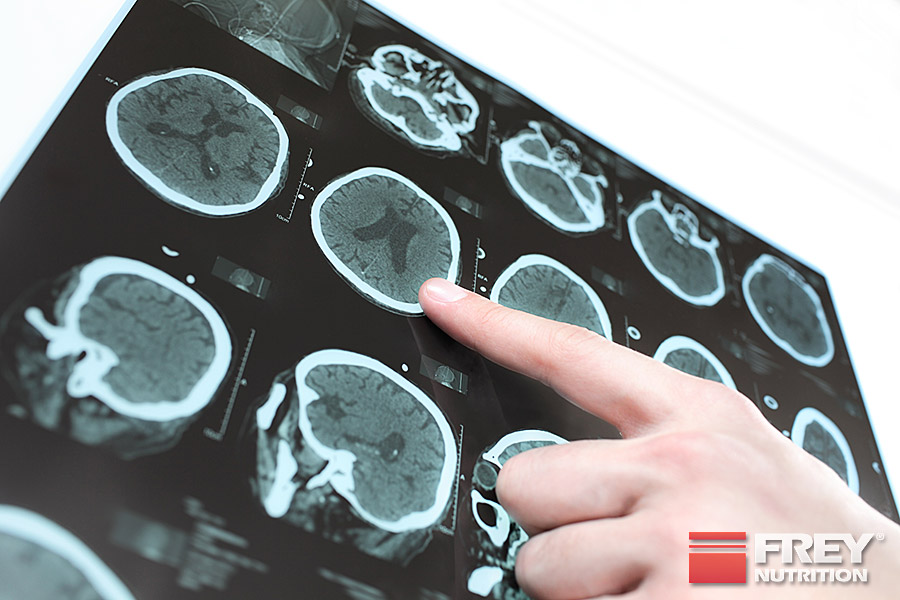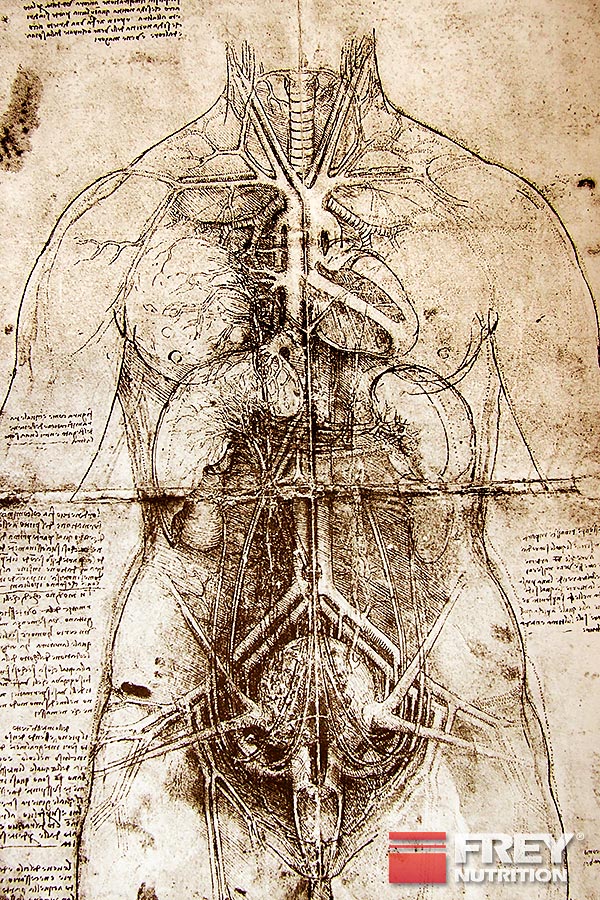CREATINE IS IMPORTANT FOR THE IMMUNE DEFENSE
The phagocytes (macrophages), which are important for the elimination of bacteria and viruses in the body, contain the creatine kinase system and need phosphocreatine as an energy source for the phagocytosis (= eating process) of intruders in the form of viruses and bacteria. (Loike et al. 1979) Creatine and phosphocreatine appear to have a direct protective effect as an energy buffer in systemic infections in humans (Lara et al. 1998) .
CREATINE AS AN OFFICIALLY APPROVED FOOD SUPPLEMENT
After the Swiss Federal Office of Public Health in Bern (FOPH) CREATINE Creatine has been tested as a food additive and approved since August 1995, and is used as a building agent by athletes in practically all sports. Several gold medals have already been won at national and international competitions using creatine to naturally increase performance.
Creatine is therefore also recommended for well-trained recreational athletes, mountain climbers, cyclists, etc. who often push themselves to the limits of their physical performance, not only because of the increase in effective physical performance, but also because recovery from great exertion is improved and accelerated (Greenhaff et al. 1994: Aaserud et al. 1988) .
In a communiqué dated December 14, 1998, the International Olympic Committee (IOC) in Lausanne made an official statement that there are no objective reasons to put creatine on the doping list and that creatine may continue to be taken by sportsmen and athletes as a permitted dietary supplement to naturally enhance performance.
CREATINE FOR VEGETARIANS, FOR SENIORS AND CONVALESSENTS
Recent research now shows that not only athletes and top sportsmen can benefit from creatine, but also people who are under physical and psychological pressure to perform at work and in everyday life, as well as convalescents whose muscle mass and strength have been greatly reduced after a long period of being bedridden.
The same applies in particular to vegetarians and older people, who have been shown to have significantly lower creatine and phosphocreatine levels in their muscles (Smith et al. 1998) . Based on the positive reports of many people who take creatine, it can be concluded that this substance can also improve brain performance, such as learning and memory, as well as movement coordination, while also increasing stress tolerance. Many test subjects also report that they recover mentally faster and better with creatine and need less sleep.
Especially since muscular phosphocreatine stores decrease significantly with age (Pastoris et al. 1998) , which is why people over 50 years of age benefit most from creatine supplementation (Smith et al. 1998) . It is obvious that creatine supplementation is therefore particularly suitable for senior citizens and that this agent could be used successfully as a valuable supplement and supplementary preparation for the geriatric sector, including in old people's homes and nursing homes. Creatine supplements would certainly also be recommended for anorexic patients.
ANIMAL STUDIES HAVE PROVEN THAT CREATINE CAN SLOW DOWN THE AGING PROCESS.
Modern man will probably never reach the 969 years of life attributed to the biblical Methuselah. However, a modest extension of life and, above all, a delay in the aging process seem quite realistic - possibly through the targeted use of creatine, as various studies have shown. At least in animal experiments, creatine was able to protect nerve cells from diseases such as Parkinson's or the hereditary disease Huntington's chorea.
But creatine can do even more, like Munich scientists around Dr. Andreas Bender and private lecturer Dr. Thomas Klopstock at the Neurological Clinic of the University of Munich in the online edition of the journal "Neurobiology of Aging" (Bender et al. 2007) : "Intake of creatine in mice resulted in LIFE EXTENSION OF NINE PERCENT ," says Klopstock. "This is remarkable compared to other "anti-aging" approaches, considering that neither a change in diet nor increased physical activity is necessary. It remains to be seen whether the study results can be transferred to humans." In animal experiments, it often seems very simple: the lifespans of fruit flies or certain roundworms and rodents can already be significantly extended. However, the findings from these experiments can only be transferred to humans to a limited extent. The process of our aging is still only partially understood. However, some important mechanisms that play a role in this are already known. For example, so-called free oxygen radicals attack cells. However, malfunctions in certain metabolic pathways, which are often linked to one another, also contribute to the aging of the body. These complex interactions make it all the more difficult to influence and control the factors and molecular processes of aging. "Increased production of enzymes that act as antioxidants, for example, can extend the lifespan in various organisms," says Klopstock. "Such a measure at the genetic level cannot simply be carried out in humans. Feeding antioxidants to mice, however, had no effect on their aging."
A protective effect of creatine on nerve cells has already been proven in animal models for Parkinson's and Huntington's disease in recent years. Since these neurodegenerative diseases are based on similar molecular mechanisms as the aging process itself, Klopstock's team wanted to test the effects of the substance on the lifespan of mice. To do this, they gave 162 female mice the same diet, with creatine added to half of the animals. It was found that the lifespan of the animals that were fed creatine was extended by an average of nine percent. "But we found other positive effects," reports Klopstock. "The mice performed significantly better physically in old age, in terms of muscle strength and balance, but also in terms of their memory. This was shown, among other things, by the fact that a smaller amount of the age pigment lipofuscin was deposited in the brain, and the free oxygen radicals were also reduced. In contrast, the activity of "anti-aging" genes in the brain, which promote the growth of neurons and protect these cells and facilitate learning, increased. OVERALL, TAKING CREATINE IMPROVED THE HEALTH OF MICE AND EXTENDED THEIR LIFESPAN. Because the good tolerability of creatine is already known and proven, this substance could possibly also contribute to healthy aging in humans."
CREATINE AS A HELPFUL THERAPY AGAINST NEURO-MUSCULAR DISEASES
Although the key role of creatine and phosphocreatine has been comprehensively demonstrated and documented based on the findings of basic research, it is surprising that creatine has received relatively little attention in human medicine until recently. It is quite likely that many patients with various diseases of the central and peripheral nervous system, as well as skeletal muscles, heart and bones, could benefit from taking creatine. In principle, it has been shown that many diseases, particularly those in the neuromuscular area, are associated with impaired cell energetics, i.e. the energy level of the nerve and/or muscle cells of these patients is well below the normal range with significantly reduced creatine levels.
CREATINE IMPROVES THE ENERGY STATE OF NERVE AND MUSCLE CELLS, WHICH CAN REDUCE MUSCLE AND ENERGY LOSS IN THE LONG TERM.
In Duchenne muscular dystrophy, there is an increased calcium concentration in the muscle cells after muscle stress. Due to the absence of the dystrophin protein or errors in the dystrophin-glycoprotein complex, defects in the cell membranes of the patients' muscles often occur in this disease, which allows too much calcium to flow into the muscle cells. The chronically increased intracellular calcium concentration causes, among other things, that the muscle cells, which try to pump the excess calcium out of the cell with constant energy expenditure and thus consumption of energetically valuable phosphocreatine, cramp and eventually slowly degenerate. Chronically increased calcium concentrations in the cells also lead to increased breakdown of muscle substance and, in the long term, to muscle atrophy as a result of the activation of calcium-dependent proteases.
Restoring optimal energy levels using creatine, which is converted to phosphocreatine (PCr) during resting phases, seems to be a logical therapeutic strategy that has actually already proven effective in cell cultures of dystrophic mice. (Pulido et al. 1998) . Recent studies with these dystrophic mice have shown that creatine not only significantly inhibits muscle necrosis, but also helps maintain mitochondrial function (Passaquin et al.2002) , which de facto LEADS TO HIGHER ENERGY SUPPLY .
Even if taking creatine and thus increasing the phosphocreatine level cannot directly repair the actual causes of the various neuromuscular diseases, creatine substitution still generally improves the energetic state of nerves and muscles.
IF CREATINE IS TAKEN EARLY ENOUGH IN THE COURSE OF THE DISEASE, IT CAN BE ASSUMED THAT NOT ONLY THE SYMPTOMS WILL IMPROVE SIGNIFICANTLY, BUT THE COURSE OF THE DISEASE CAN ALSO BE SLOWED DOWN OR EVEN DELAYED FOR A LONGER PERIOD OF TIME.











